The Story of Christian Bobst

Click Here To Search My Bobst Database
Click Here To Search My Bobst Descendant Report
If you have descendants of Christian Bobst in your line, please e-mail me with your family information and I will be happy to include it in this database. I will list you as a contributer and provide your e-mail address and a link to your homepage.

 | The First White Settler in Pawnee County, |  |
Christian Bobst was born on September 4, 1802 in Reading, Berks County, Pennsylvania, the son of Anna Maria Elizabeth Bobst nee Brobst. Many researchers believe his father was John George Bobst, the son of Michael Bobst and Anna Philipina STEIN, but this connection has not been proven. In 1809, there was a George Bobts listed on the tax list of Piccaway Township, Ross County, Ohio. (Piccaway Township later became Pickaway County.) He was listed as George Bobst on the 1810 tax list of Pickaway County. Christian's mother, called Mary, was listed as a head of household on the 1820 census of Pickaway County, but there was no George listed. In 1839, there was a partition record #3, on page 319 in the Common Pleas Court which listed the heirs of Mary Bobst, who had died February 27, 1838. On the 1840 census for Fairfield County there was listed in the home of Christian Bobst an older man, age 70-80 and this was most likely George if he was the father.
While he lived in Fairfield County, Christian was involved in the mercantile business. He had received training as a young man as a "hatter", and he may have followed this occupation during these years also. Christian was married to Sarah Book, the daughter of John Book, Jr. and Annabarbary Miller on November 1824, in Rushville, Fairfield County. The young couple soon started their family of thirteen children with twelve of them being born in Rushville.
 | On The Move |  |
In 1854, the Christian Bobst family along with other families began their trek west to find new homes in Missouri. However, by the time they arrived, there was no longer any land available to be had. So Christian Bobst, Robert Turner, Jacob Adams, and Robert Archer started out to find land they could settle on. They went north and crossed the Nemaha River believing they were in the limits of Kansas, they began to search for the right spot on which to make their claims. Christian became the first white settler in what would become Pawnee County, Nebraska when he drove his stake into the ground on April 4, 1854, with the words "I locate my claim here" written on it. He had claimed the N.W. Quarter, Section 25, Range 1, Township 11 of Pawnee County. Christian then built the first house in the county.
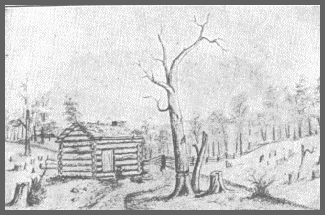
Mr. Turner located his claim on the S.W. Quarter of Section 25; Mr. Archer settled upon the S.W. Quarter of the same section; and Mr. Adams settled upon the S.W. Quarter of Section 94. George T. Bobst settled upon the remaining quarter of Section 25 a few days later.
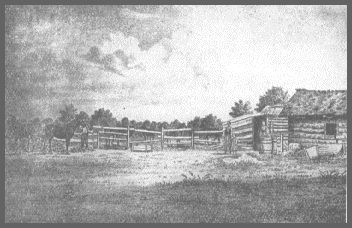

 |
From "Cincinnatti" By Mabel Ord |  |
"The first settlers that came to the precinct of South Fork in the spring of 1854. The settlers were Christian Bobst, Robert Turner, Jacob Adams, and Robert Archer. The settlement was originally called the Bobst settlement. Later it was named Pleasant Valley, and finally named Cincinnati. The Pleasant Valley Post Office was located in the Bobst Cabin. First the cabin of Christian Bobst, then that of George Bobst until 1886."
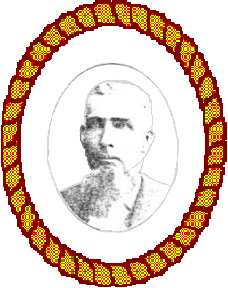 | 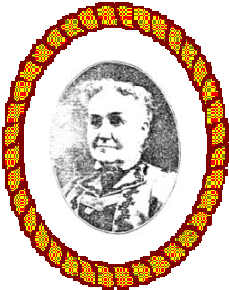 |
|
| Robert Turner | Mary Turner |

 |
From the book, Across The Plains |  |
Christian had been so delighted with the beautiful landscape and wonderful view that he made the statement, "I expect to live and die right in that valley." And he did just that, becoming Pawnee County's Probate Judge in the fall of 1854 and their first postmaster in 1856. He also became the County Treasurer in 1856. The first class of the Methodist Episcopalian Church was held in his cabin in the fall of 1856. Christian died there on October 1, 1859. Christian's wife and the mother of his children, Sarah Book, lived on until November 15, 1892. She was buried next to her husband in the Pleasant Hill Cemetery in Cincinnati, Pawnee County, Nebraska. She was born on December 12, 1806, in Rushville in Fairfield County, Ohio.
Christian and Sarah had raised their children in their Nebraska home, with Martha and her siblings all being born in Rushville, Ohio. Martha was the youngest of the children so was the baby of the family. The family started less than a year after the marriage of Christian and Sarah on November 18, 1824, in Rushville, Ohio. Of Martha's siblings, John was born first; then Matilda M.; and George Turner; Danieal Baker; Annabarbary; Mary Jane; Thomas Ewing; Simon H.; Robert Paden; Sarah; and Samuel Book . Of these twelve children, seven of them died before the family's move to Nebraska; John; Matilda M; Danieal Baker; Annabarbary; Thomas Ewing; Simon H.; and Sarah. This must have been devastating for this family to lose so many children and their deaths may have been a contributing factor to their move from Ohio.
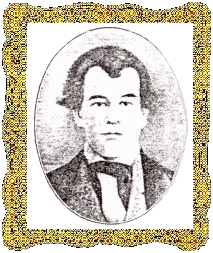 | 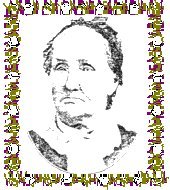 | |
| Christian Bobst | Sarah Bobst |
Sarah must have been a very strong woman to have been able to deal with the loss of seven of her children and then only a few short years after their arrival in Pawnee County to have to deal with the loss of her husband. She had been left with the two youngest children, Samuel and Martha, to raise on her own. To add to this, Robert Paden died on October 20, 1864, possibly in the Civil War, and George Taylor died on January 19, 1884. During her lifetime, Sarah had buried her husband and nine of her children, showing a great inner-strength.
Sarah's last years were spent living in a little one-room house in Cincinnati. Another grandchild, Clara, lived with her parents right near where Sarah lived and she took her meals with them. Clara said, "She smoked a clay pipe and smoked Old Style tobacco, and her pills were Bile Beans. I think that was a laxative but she always had those two things on hand. She always sat in a little Wicker Rocker by the south window, and the sill was soft pine, and she just sat there with her hand on that window and there was a little round dent where she scratched it with her fingernail."

 |
From: The 1st 60 Years, | 
|
GEORGE T. BOBST, farmer and stock-raiser. Section 25, Cincinnati P. 0., was born and reared in Ohio, and followed the trade of tailor till June 11, 1854, when he came here, and has been actively connected with the farming and stock industry of this locality since. On June 11, 1863, he was married to Miss Mary E. Taylor, who was born in Massachusetts and reared in Kansas. They have a family of two sons and six daughters -- Robert, Mattie, Mary, Emily, Minnie, Grace, Maud and Edmund. Mr. Bobst has been an active worker in the development of the social life of his locality since coming here.
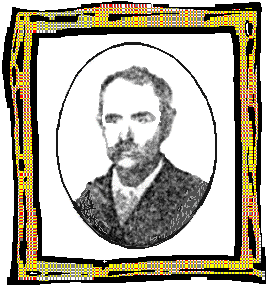 |  | |
| George T. Bobst | Mary Bobst |
George Turner Bobst constructed the first boot-jack.

 |
From: Andreas' History of the State of Nebraska, | 
|
"Judge Christian Bobst was the first Postmaster, and the "post office," over which he and his son, George T., were the guardian spirits, was called Pleasant Valley. It was in the extreme southeastern portion of the county, and for some time Pawnee City was entirely dependent upon it. Mr. Bobst (George T.) relates that the duties of the position were quite a tax upon the average man's patience, as they necessitated the looking over of several bags of through mail to Fort Kearny, just for the sake, perhaps, of extracting two or three epistles belonging to the good people of Pawnee County."

 |
From the Book, Across The Plains by Donna E. Kilroy |  |
Frances's great-grandfather, William James Emigh, was a young man when he made the journey to Nebraska. He came with his parents who would have endured the same hardships as the other settlers making their move half way across this seemingly endless country. Times were hard in Pennsylvania and so, encouraged to come west by a letter from William's Uncle Jacob, they had left the green, mountainous state of Pennsylvania and arrived in Nebraska, making their stop in DuBois, a flat, dry little town in the southeastern corner of Pawnee County about 1861. There were no nice looking brick buildings, not many trees, only the flat-topped wooden buildings on a wide and dusty street. Many of the new residents were living in one room log cabins and some, because there weren't a lot of trees, had made their homes in dug-outs in the side of a hill.
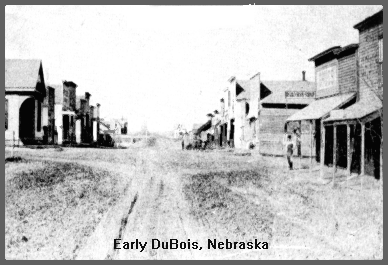
Was this a terrible disappointment for this family when they arrived? After farming the fertile and rolling meadows of Pennsylvania, it must have seemed like a daunting feat to be able to make anything grow here. For miles, as far as the eye could see, was nothing but green prairie grass, spread out before them like a beautiful green sea. With few trees and low valleys scattered here and there, it was going to be hard to make even sod corn grow.
Those first years weren't easy for the pioneers. They had to travel for miles, down into Missouri, the nearest place they could go, for provisions. And in the winter months, the men often had to leave their families alone, to almost freeze to death, while they traveled south for flour, meat, groceries and other needed staples. The women, strong of character, waited at home for their men who might never come back, with only their promises to return to keep them going while they waited and wondered if they were going to survive.
In the warmer months, game was plentiful with all types of fowl, rabbits, and deer for the family man to feed his family. But hunting could be dangerous, as the settlers had to constantly be on the lookout for the roving bands of hostile Indians who sometimes crossed their paths while they were out on their hunting expeditions.

- Copy of old Family Bible in possession of Donna E. Kilroy.
- Frances R. Hackworth.
- The 1st 60 Years, History of Pawnee County, NE, by Walter C. Kern (1854-1914).
- Fairfield County, Ohio, marriage records.
- 1840 Federal Census, Fairfield County, Ohio.
- Across The Plains by Donna E. Kilroy.
- Andreas' History of the State of Nebraska, Pawnee County

 Return to my Surnames and Family History Page
Return to my Surnames and Family History Page E-Mail me here
E-Mail me here